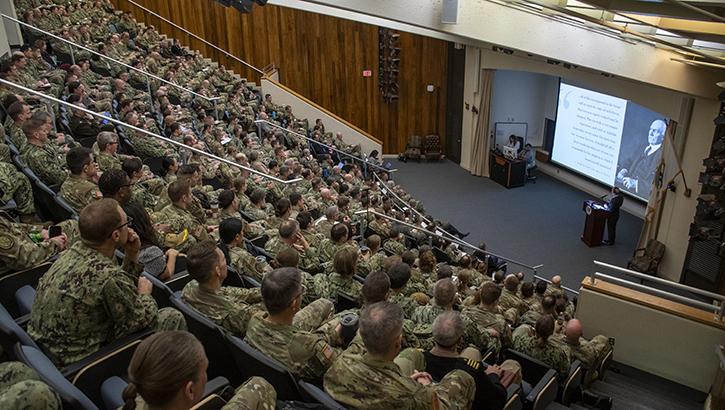Expansion of DHA Graduate Medical Education Training Sites: Advancing Military Medical Expertise
Broadening Clinical Training Horizons Within the Military Health System
The Defense Health Agency (DHA) has recently augmented its Graduate Medical Education (GME) training network, significantly enriching the clinical learning landscape for military healthcare trainees. This expansion introduces a wider array of accredited programs spanning the Department of Defense (DoD), aimed at cultivating advanced medical skills and operational readiness. Trainees now benefit from exposure to a variety of clinical settings, including top-tier military hospitals, civilian healthcare partnerships, and specialized research institutions, fostering a comprehensive and adaptable medical education experience.
Key advantages of this expanded GME framework include:
- Enhanced specialty training opportunities across numerous medical fields
- Diverse patient case exposure that sharpens diagnostic and procedural abilities
- Robust mentorship programs featuring expert military and civilian clinicians
- Improved integration within the Military Health System to bolster both readiness and population health outcomes
| Type of Training Site | Number of New Sites | Highlighted Specialties |
|---|---|---|
| Military Medical Centers | 8 | Trauma Care, Surgical Specialties, Emergency Medicine |
| Civilian Collaborative Clinics | 12 | Primary Care, Behavioral Health, Pediatrics |
| Research and Epidemiology Facilities | 4 | Infectious Diseases, Public Health Surveillance |
Evaluating the Influence of DHA Training Sites on Medical Readiness and Care Excellence
The integration of these expanded DHA GME sites has markedly improved the preparedness of military healthcare providers. Immersive clinical experiences across diverse environments equip residents and fellows with the agility and expertise necessary for the unpredictable nature of military medical operations. Exposure to a broad spectrum of casesŌĆöfrom routine outpatient visits to complex trauma managementŌĆöensures that graduates are mission-ready and capable of delivering high-quality care in deployment settings.
Patients treated at DHA-affiliated institutions also reap the benefits of this enriched training ecosystem. Recent performance data indicate notable improvements in patient satisfaction, reduced hospital readmissions, and shorter inpatient stays, attributable to the adoption of evidence-based clinical protocols emphasized during residency. The following table summarizes key quality metrics before and after the expansion of DHA training programs:
| Quality Indicator | Before DHA Expansion | After DHA Expansion |
|---|---|---|
| Patient Satisfaction (%) | 82 | 91 |
| 30-Day Readmission Rate (%) | 15 | 9 |
| Average Hospital Stay (days) | 5.8 | 4.3 |
- Advanced clinical proficiency: Trainees engage with state-of-the-art medical technologies and protocols.
- Patient-centered care emphasis: Training fosters improved communication and engagement with patients.
- Elevated deployment readiness: Graduates demonstrate superior preparedness for operational assignments.
Overcoming Obstacles in Merging Graduate Medical Education with Military Healthcare Operations
Embedding Graduate Medical Education within DHA facilities involves navigating distinct challenges, primarily balancing the dual imperatives of military readiness and comprehensive medical training. Constraints such as limited faculty availability and the need for diverse clinical case exposure can strain resources. Additionally, harmonizing military-specific healthcare demands with Accreditation Council for Graduate Medical Education (ACGME) accreditation standards requires innovative curriculum development and close coordination among multiple stakeholders.
Principal challenges include:
- Resource Management: Allocating faculty and clinical opportunities without compromising patient care.
- Training Consistency: Ensuring uniform educational quality across geographically dispersed sites.
- Operational Readiness Integration: Embedding military preparedness within clinical education without disrupting service delivery.
To address these issues, DHA has adopted several forward-thinking strategies. The use of tele-education platforms and simulation-based learning expands access to expert instruction beyond physical site limitations. Collaborative faculty appointments across facilities diversify teaching resources and reduce burnout. The table below outlines these challenges alongside implemented solutions and their outcomes:
| Challenge | Implemented Solution | Resulting Impact |
|---|---|---|
| Limited Faculty and Clinical Exposure | Shared faculty roles and tele-education initiatives | Broadened access to expert teaching and reduced instructor fatigue |
| Maintaining Training Uniformity | Centralized curriculum oversight with tailored site adaptations | Consistent training quality and compliance with accreditation standards |
| Balancing Military Readiness with Education | Incorporation of military skills modules into clinical rotations | Improved readiness without compromising clinical education |
Strategies to Foster Collaboration and Optimize Resources Across DHA Training Sites
Enhancing the effectiveness and uniformity of training at DHA GME locations hinges on strengthening collaboration and resource sharing. Establishing a centralized digital platform can facilitate real-time access to educational materials, case studies, and performance data, promoting seamless communication among faculty and trainees. This interconnected approach encourages peer support and the exchange of innovative practices tailored to the unique demands of military healthcare.
Equally critical is the equitable distribution of resources such as simulation labs, specialized equipment, and expert personnel. Implementing a standardized framework for resource allocation can maximize collective capabilities while minimizing duplication. The table below highlights key resource categories, sharing strategies, and anticipated benefits for DHA training programs:
| Resource Type | Sharing Approach | Expected Benefits |
|---|---|---|
| Simulation Equipment | Coordinated scheduling and joint training exercises | Improved clinical competencies and standardized practice |
| Faculty Expertise | Cross-site guest lectures and mentorship initiatives | Expanded knowledge base and diverse clinical perspectives |
| Research Infrastructure | Shared data repositories and collaborative research groups | Enhanced innovation and increased scholarly output |
Conclusion: Strengthening Military Medicine Through Expanded Graduate Medical Education
As the demand for proficient military healthcare providers intensifies, the DHAŌĆÖs expanded Graduate Medical Education training sites are pivotal in preparing the next generation of medical professionals. By delivering rigorous, hands-on training across a broad spectrum of clinical environments, these programs ensure that military medical personnel are equipped to tackle the complex healthcare challenges of both current and future operational landscapes. Health.mil remains dedicated to supporting and growing these educational initiatives, thereby reinforcing the resilience and readiness of the Armed ForcesŌĆÖ medical community. For further details on DHA Graduate Medical Education Training Sites and their transformative impact on military healthcare, visit Health.mil.




